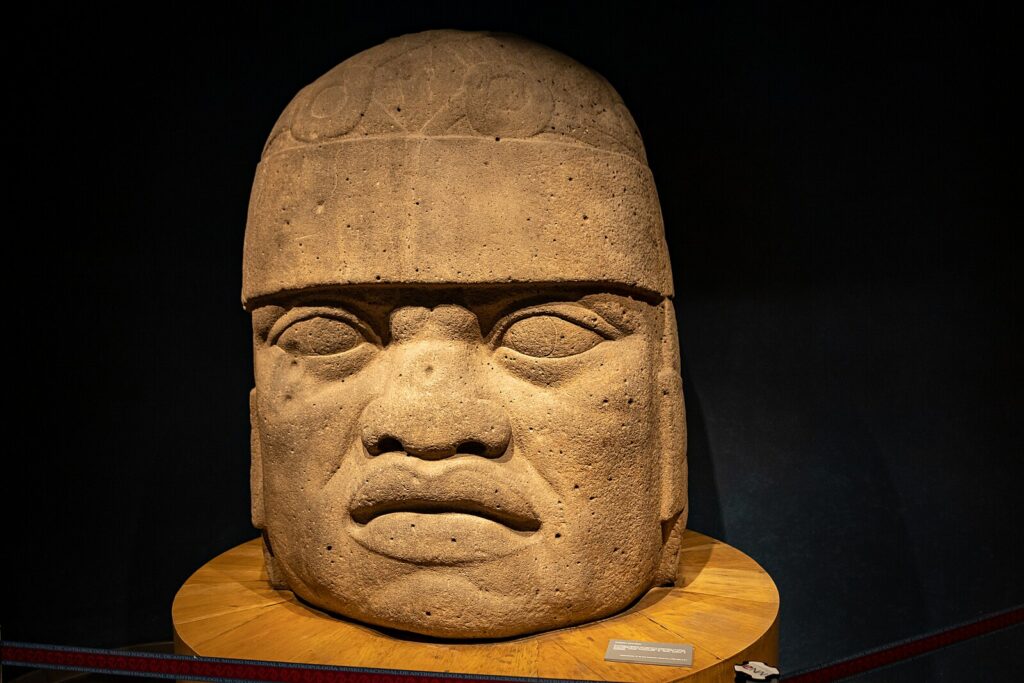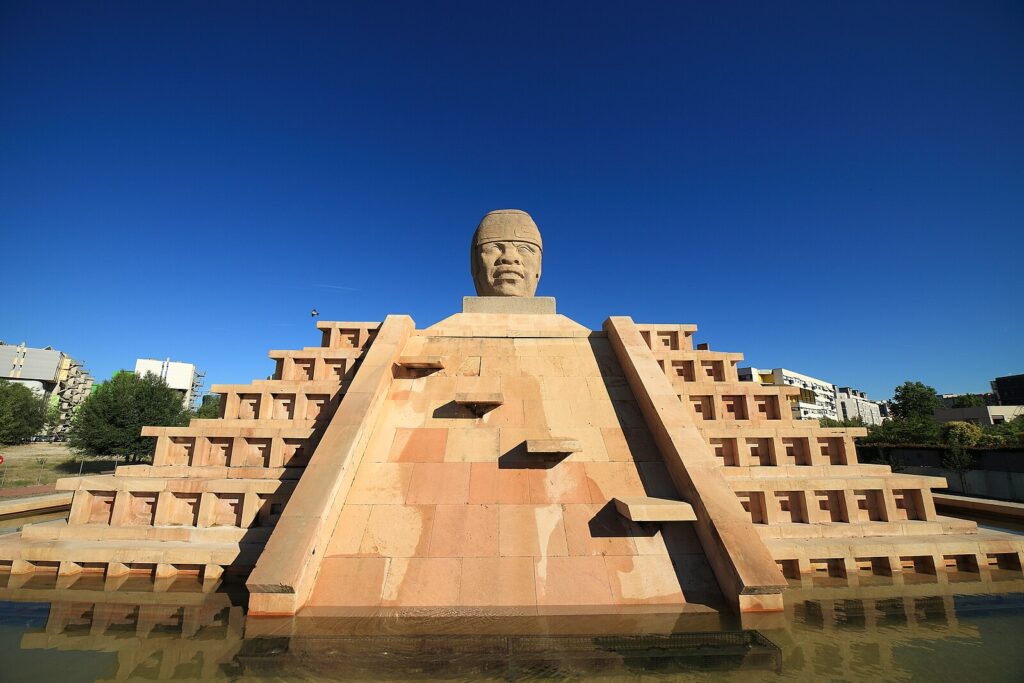The Olmec civilization is counted amongst the first major ‘cradles’ of civilizations in the world. It developed in the low-lying lands of Southeast Mexico. The Olmecs were believed to have existed between 1200 Before Common Era (BCE) and 500 Common Era (CE).
While little is known about the civilization itself, the Olmec Colossal Heads found in various areas of Mexico have provided some clues. However, even these clues have been the topics of serious debate.

The Discovery of the Olmec Colossal Heads
The first Olmec colossal head was discovered in the 1850s. According to reports, a farmer was clearing the area to make a cornfield when he chanced upon a partially buried stone structure. At first, he thought it was a large cauldron, but as he kept digging and digging, he understood that this was something truly gigantic.
This particular discovery was not well documented, which is why Matthew Williams Stirling is often credited for discovering the first Olmec head in 1938 at Tres Zapotes. This was an archaeological site on the Papaloapan River plain in Mexico.
It prompted a deeper study of the Olmec civilization and culture, which academics referred to as archeological in nature. Archeological culture is when most of what you know about a society is based on artifacts rather than recorded text.
Seventeen colossal Olmec heads have since been found in four archeological sites– Tres Zapotes, San Lorenzo, La Venta, and La Cobata, in two locations, Veracruz and Tabasco. The heads have a height ranging from 1.45 to 3.4 meters, and their weight ranges from six to 40 tons.
Knowing the weight of these Olmec heads raises an interesting fact. These artifacts were made of basalt, reportedly mined in the Sierra de los Tuxtlas mountains of Veracruz.
Since the heads were found in different areas, it means that the Olmecs were shaped, sculpted, and refined from one basalt boulder in the mountains. Many of the heads were then moved for at least dozens of miles.
Academics believe the heads were transported either via river rafts at sea or using log rollers on land.
Dating the Colossal Heads
It has been hard to precisely date the colossal heads, even with new technology. In the case of the colossal heads found in San Lorenzo, they were buried sometime in 900 BCE but made much earlier than that.
The Tres Zapotes heads were moved, which made it even harder for archeologists to project when they were manufactured. As for the La Venta artifacts, they were already exposed to modern elements, which hampered accurate dating.
Based on educated guesses, the colossal heads were constructed between a timeline of 50 and 200 years, during the Early Preclassic era, between 1500 and 1000 BCE. Two Tres Zapotes heads and a La Cobata head were determined to be Middle Preclassic or between 1000 and 400 BCE.
The best showcase of sculpture skills was found on the San Lorenzo heads, which were also believed to be the oldest.
What the Heads Say About Olmec Culture
Every head is unique but shares some common characteristics. They have fleshy cheeks, flat and large noses, and slightly crossed eyes. They are believed to be monuments of powerful or influential Olmec leaders.
Facial details, such as depth in the nostrils, dimples on the cheeks, and unique features surrounding the eyes and mouth, are prominent on each colossal head. The facial expressions are also very clear, which makes experts believe they are portraits of actual rulers and not just large generic busts.
The Olmec Civilization was highly debated among scholars. A few believed that the colossal heads had African features, which would mean that the Olmecs had an encounter with another civilization. The thesis was highly contested because the physical features of the colossal heads are still seen in some of today’s Tabasco and Veracruz locals.

Moreover, every structure has a distinct head accessory believed to be worn either during war or when playing a ballgame. The headgear is thought to be solid to protect the head.
The Mesoamerican ballgame is similar to modern ballgames, which include a court and a ring. While the rules of the game are unknown, theories say that the goal was to get a solid rubber ball into one of the rings. However, players weren’t allowed to use their hands, just padded elbows, shoulders, knees, and thighs.
The helmet designs are also unique. Some have jaguar paws on the forehead, which may have religious and political significance. One colossal head also has huge talons carved on the front.
Scholars created the term Olmec because of the Aztec word Olmecatl, which means “inhabitant of rubber country.” Rubber production was the primary source of livelihood in the areas where the artifacts were found.
Olmec: First Mesoamerican Civilization
There are six cradles of human civilization:
- Mesopotamia – 4000 – 3500 BCE
- Ancient Egypt – 3100 BCE
- Ancient India – 3300 BCE
- Ancient China – 2000 BCE
- Ancient Peru – 1200 BCE
- Ancient Mesoamerica – 1200 BCE
Mexico and Central America were home to various indigenous cultures, with Olmec as the oldest. The civilization was believed to have existed starting around 1200 BCE. The Zapotec, Maya, Toltec, and Aztecs followed.
The Zapotec people were regarded as the first to develop a writing system and the first calendar in Mesoamerica. The Mayans were known to have developed advanced mathematics, architecture, hieroglyphics, and astronomy.
The Aztecs, for their part, were reputed for their works of art using picture writing, terracotta, feathers, and mosaics.
The colossal stones displayed the Olmecs’ ability to make sophisticated stone sculptures. They are also considered among the first inhabitants in the Americas to develop architectural marvels.
The Olmecs are also credited to have been the first to build pyramids. The Great Pyramids of La Venta is a conical construction made of clay. It is the highest point of La Venta and stands about 30 meters high with a width of 120 meters. It is believed the Olmecs considered it as a stand-in for a sacred mountain. The base of the pyramid seems to be “guarded” by three colossal heads.
Olmec also is considered the Mother Culture in Mesoamerica.
Conclusion
Olmec art was ahead of its time, and it shows through the colossal heads and other artifacts found in ancient Mexico. Olmec art is considered to have been responsible for shaping Mesoamerican art.
The Olmec colossal heads, for example, showcased talent in sculpting portraits– large monumental portraits at that.

